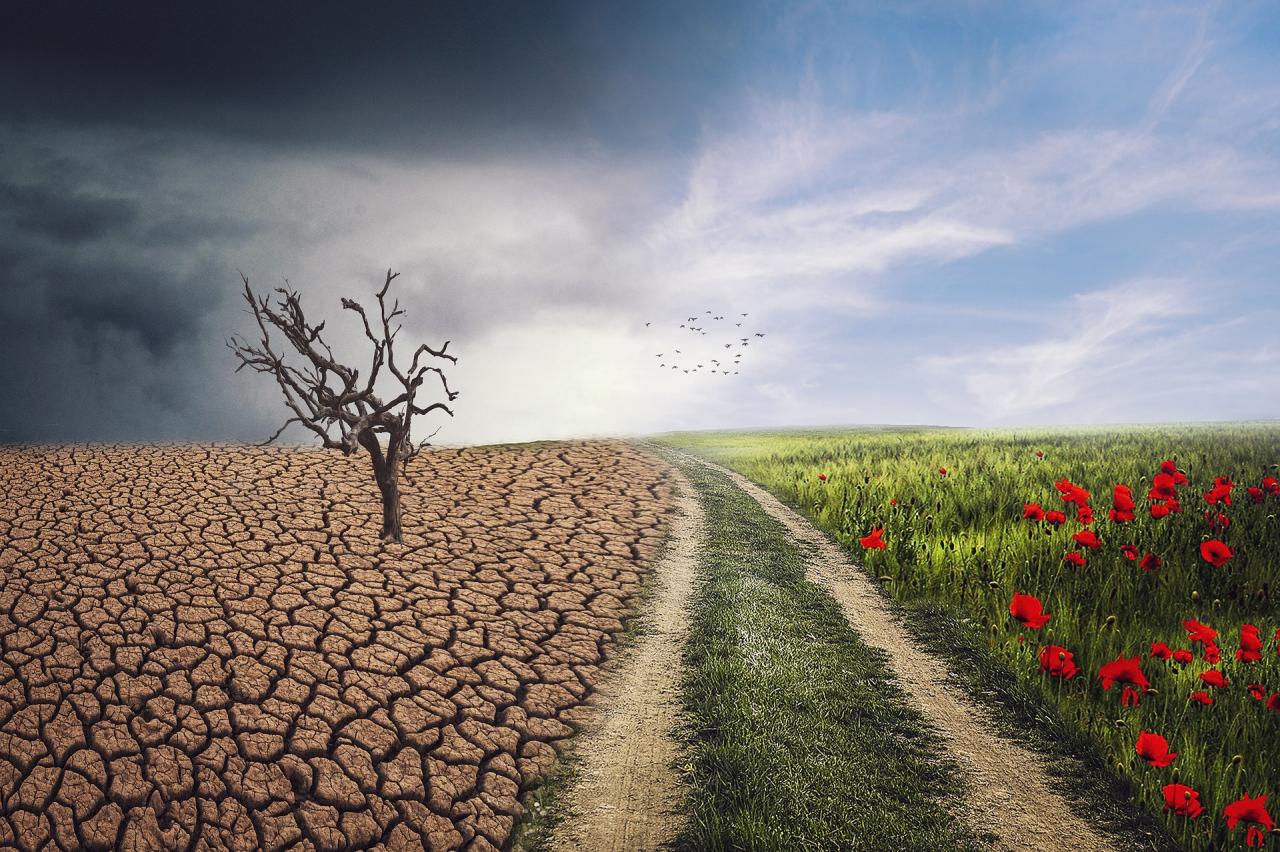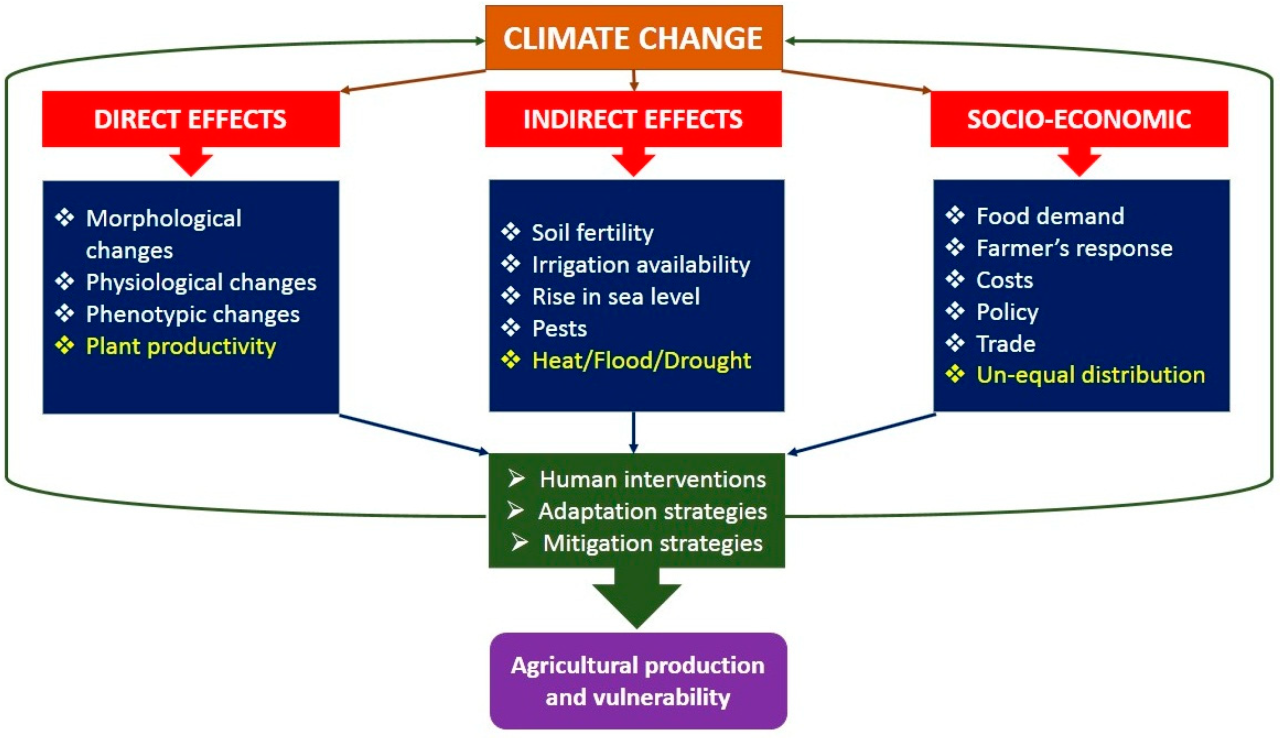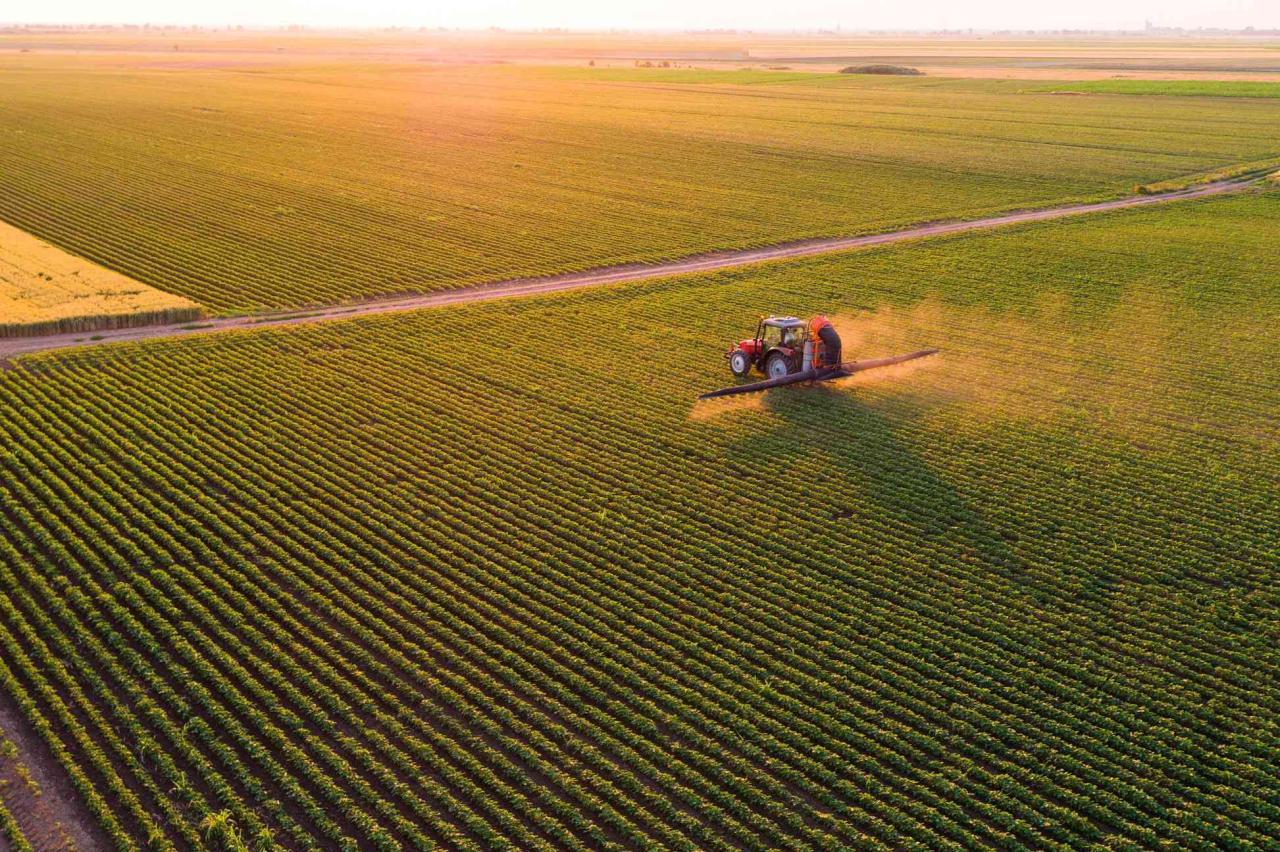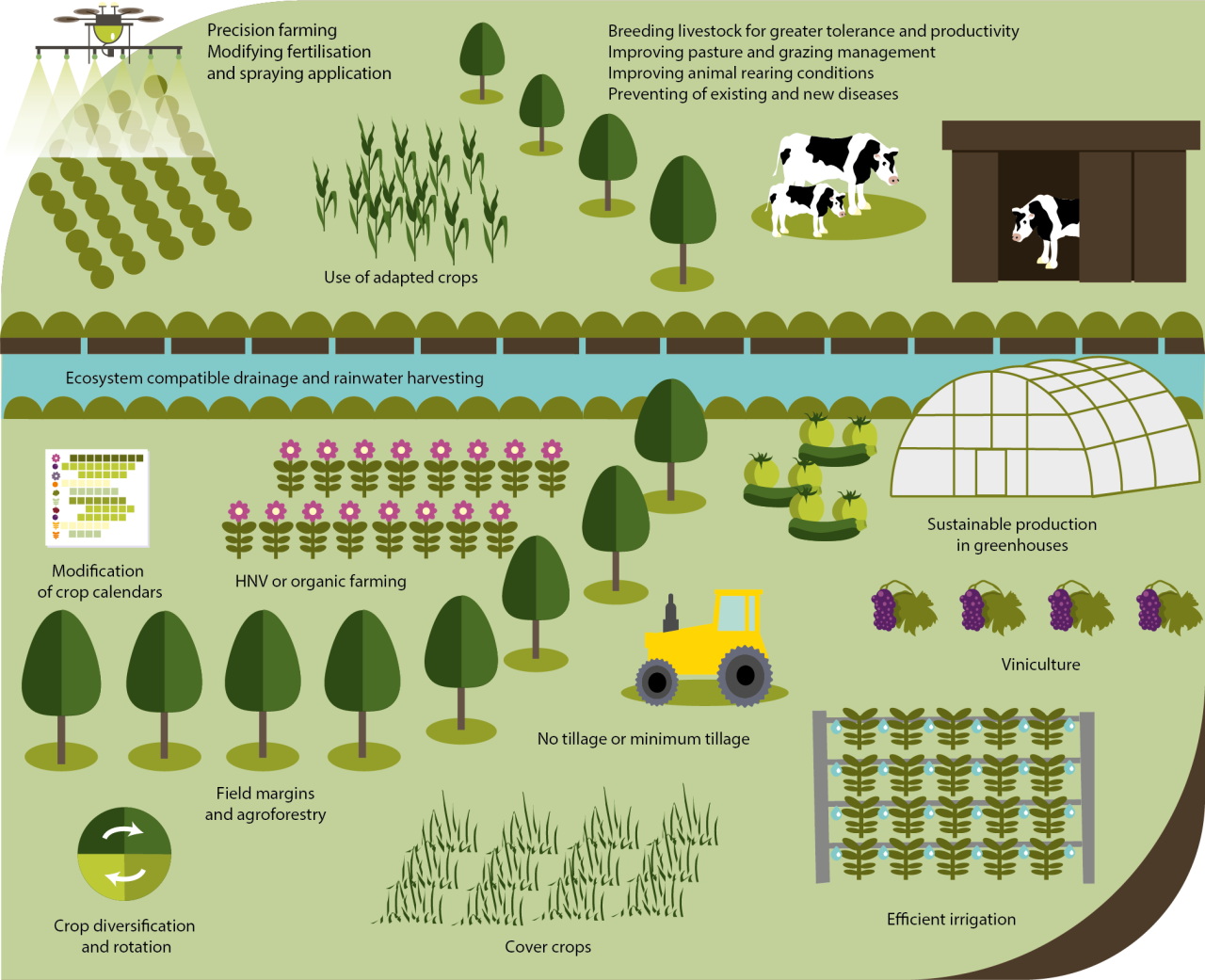Millennial farmers and the impact of climate change on agriculture is a story of adaptation, innovation, and a whole lot of grit. These young farmers aren’t just tilling the soil; they’re battling unpredictable weather patterns, grappling with economic uncertainties, and pioneering new technologies to ensure the future of food production. This isn’t your grandpappy’s farm – it’s a high-stakes game of sustainable practices, technological leaps, and a fight for the very survival of their livelihoods.
From drought-resistant crops to precision agriculture powered by apps, millennial farmers are embracing innovative solutions to combat the escalating effects of climate change. But their journey isn’t without its hurdles. Access to resources, financial support, and adequate training remain significant challenges. This exploration delves into the triumphs and tribulations of this generation of farmers, highlighting their resilience and the crucial need for supportive policies and resources to ensure a thriving agricultural sector in the face of a changing climate.
Millennial Farmers’ Adoption of Sustainable Practices

Millennial farmers, armed with smartphones, savvy business acumen, and a deep-seated concern for the planet, are shaking up the agricultural landscape. They’re not just growing food; they’re building a more sustainable future, one crop at a time. Forget dusty overalls and outdated techniques; these farmers are embracing technology and innovative practices to combat climate change and create resilient farming systems.
Sustainable farming practices are rapidly gaining traction among millennial farmers, a stark contrast to the often resource-intensive methods of previous generations. This shift isn’t just about ethical concerns; it’s about economic viability in the face of increasingly unpredictable weather patterns and rising input costs. By adopting eco-friendly techniques, these young farmers are demonstrating that sustainability and profitability can go hand-in-hand, proving that being green isn’t just a trend, but a smart business strategy.
Comparison of Traditional and Millennial Farming Methods
Traditional farming methods often relied on monoculture (planting a single crop repeatedly), heavy use of synthetic fertilizers and pesticides, and intensive tillage (plowing the land). This approach, while sometimes yielding high short-term profits, often depleted soil health, increased water pollution, and contributed significantly to greenhouse gas emissions. Millennials, however, are championing a different approach. They’re adopting practices like crop rotation, cover cropping, no-till farming, and integrated pest management, focusing on building soil health, reducing reliance on synthetic inputs, and enhancing biodiversity.
The result is a more resilient and environmentally friendly system.
Challenges Faced by Millennial Farmers in Adopting Sustainable Agriculture
While the benefits of sustainable farming are clear, the transition isn’t without its hurdles. Access to capital and land remains a significant barrier for many young farmers, particularly those seeking to implement more expensive, but ultimately more sustainable, technologies. Additionally, navigating complex certification processes and finding markets willing to pay a premium for sustainably produced goods can be daunting.
Furthermore, the learning curve for new techniques and technologies can be steep, requiring significant time and investment in training and education. Finally, the unpredictable nature of climate change itself presents a major challenge, demanding constant adaptation and resilience.
Examples of Successful Sustainable Farming Initiatives
Many millennial farmers are successfully implementing sustainable practices, proving that it’s possible to farm responsibly and profitably. Here are some examples:
| Farmer/Farm | Location | Sustainable Techniques | Impact |
|---|---|---|---|
| Sarah Miller, Sunnyside Farm | California | No-till farming, cover cropping, water harvesting | Reduced water usage, improved soil health, increased yields |
| David Lee, Green Valley Organics | Colorado | Compost tea, biodynamic farming, integrated pest management | Reduced pesticide use, enhanced biodiversity, improved soil fertility |
| Maria Rodriguez, Tierra Madre Farm | Texas | Agroforestry, crop diversification, solar energy | Reduced carbon footprint, increased resilience to climate change, enhanced ecosystem services |
| John Smith, Urban Harvest Project | New York City | Vertical farming, hydroponics, composting | Reduced transportation costs, increased food security in urban areas, minimized land use |
The Impact of Climate Change on Millennial Farmers’ Livelihoods

Millennial farmers, already navigating the complexities of a challenging agricultural landscape, are facing an increasingly volatile future due to climate change. The unpredictable weather patterns, intensified by global warming, are directly impacting their income, forcing them to adapt and innovate in ways their predecessors never imagined. This isn’t just about changing weather; it’s about the very survival of their farms and livelihoods.Climate change’s effects on millennial farmers are multifaceted and far-reaching, creating a perfect storm of economic instability.
The increased frequency and intensity of extreme weather events, coupled with the rising cost of adapting to these changes, are putting immense pressure on their businesses. This generation, already saddled with student loan debt and high land costs, is finding it increasingly difficult to stay afloat amidst these environmental challenges.
Economic Vulnerabilities of Millennial Farmers Due to Climate Change
The economic vulnerabilities faced by millennial farmers are significant and often interconnected. Droughts lead to crop failures, drastically reducing income and potentially leading to farm foreclosure. Conversely, devastating floods can wipe out entire harvests in a matter of hours, leaving farmers with crippling debt and little to show for a year’s hard work. Extreme temperatures, both heat and frost, can damage crops at various stages of growth, leading to significant yield losses and financial hardship.
The unpredictability of these events makes long-term financial planning nearly impossible, forcing many farmers to rely on short-term, high-interest loans just to stay operational. Imagine the stress of planning a year’s harvest only to have it destroyed by a sudden, unexpected flood – it’s a scenario becoming increasingly common for millennial farmers.
Coping Mechanisms and Adaptation Strategies
Millennial farmers are not passive victims; they are actively seeking innovative solutions to adapt to the changing climate. Many are adopting drought-resistant crops, implementing water-efficient irrigation techniques, and exploring diversified farming practices to reduce their reliance on single crops vulnerable to extreme weather. The use of precision agriculture technologies, such as weather monitoring and soil sensors, allows for more informed decision-making, optimizing resource use and minimizing losses.
Furthermore, many are embracing community-supported agriculture (CSA) models, fostering direct relationships with consumers and providing greater financial stability. Some are even turning to alternative income streams, such as agritourism or value-added products, to diversify their income sources and mitigate risks. These strategies represent a proactive response to a challenging situation, showcasing resilience and ingenuity.
Government Policies to Protect Millennial Farmers
Government support is crucial in helping millennial farmers weather the storm of climate change. The economic impact is severe, and proactive policies are needed to prevent widespread farm failures.
- Targeted Financial Assistance: Subsidies and low-interest loans specifically designed to help farmers implement climate-resilient practices, such as drought-resistant crops or improved irrigation systems.
- Crop Insurance Reform: Expanding crop insurance programs to cover a wider range of climate-related risks, including extreme temperatures and unpredictable weather patterns. This should include more affordable premiums and improved coverage levels.
- Investment in Research and Development: Increased funding for research into climate-resilient crops and farming techniques tailored to the specific challenges faced by different regions.
- Climate-Smart Agriculture Training: Providing access to training and educational programs that equip millennial farmers with the knowledge and skills needed to adapt to climate change.
- Disaster Relief Funds: Streamlining the process for accessing disaster relief funds, ensuring that farmers receive timely and adequate support after climate-related events.
Technological Innovations and Millennial Farmers

Millennial farmers, armed with smartphones and a healthy dose of tech-savviness, are revolutionizing agriculture. They’re not just inheriting dusty family farms; they’re leveraging technology to build resilient and profitable operations in the face of a changing climate. This isn’t your grandpappy’s farming – it’s data-driven, precision-focused, and surprisingly hip.Technological advancements are becoming essential tools for millennial farmers striving to adapt to the increasingly unpredictable weather patterns and environmental challenges associated with climate change.
Precision agriculture techniques, coupled with climate-smart technologies, are allowing for more efficient resource management and improved crop yields, even amidst extreme weather events.
Examples of Innovative Technologies Used by Millennial Farmers
Millennial farmers are embracing a diverse range of technologies to monitor and manage their crops. This isn’t just about fancy gadgets; it’s about informed decision-making based on real-time data. For instance, drone technology allows for efficient field surveys, providing high-resolution imagery to assess crop health, identify areas needing attention (like irrigation or pest control), and even monitor soil conditions.
Smart sensors embedded in the soil provide real-time data on moisture levels, temperature, and nutrient content, allowing for precise irrigation and fertilization, minimizing waste and maximizing yields. Weather stations provide hyperlocal forecasts, enabling farmers to make proactive decisions about planting, harvesting, and protecting their crops from extreme weather. Furthermore, sophisticated software platforms integrate all this data, providing a comprehensive overview of farm operations and allowing for data-driven decision-making.
Barriers to Access and Adoption of Technologies
Despite the clear benefits, several hurdles prevent widespread adoption of these technologies among millennial farmers. The high initial cost of purchasing and implementing these technologies is a significant barrier, particularly for smaller farms with limited capital. A lack of access to reliable internet connectivity in many rural areas hinders the use of data-driven tools and remote monitoring systems.
Furthermore, the complexity of some technologies requires specialized training and technical expertise, which may not be readily available or affordable for all millennial farmers. Finally, a lack of awareness about the benefits of these technologies and limited access to financial support and educational resources can also impede adoption.
Hypothetical Scenario Illustrating Positive Impact of Technology Adoption
Let’s imagine Sarah, a millennial farmer in California’s Central Valley, facing increasingly erratic rainfall patterns. Traditional farming methods are proving unreliable. However, Sarah invests in a precision irrigation system guided by soil moisture sensors and weather data. This system allows her to deliver water precisely where and when it’s needed, conserving water and preventing waterlogging during heavy rains, while ensuring sufficient moisture during dry spells.
In a year with unpredictable rainfall, Sarah’s farm, equipped with this technology, experiences a 15% increase in yield compared to neighboring farms using traditional methods. This increased yield, coupled with water savings, translates to a 20% boost in profitability, demonstrating the significant return on investment from adopting climate-smart technologies. This success story, while hypothetical, reflects the real-world potential of technological innovation in enhancing the resilience and profitability of millennial farmers facing climate change challenges.
Access to Resources and Support Systems: Millennial Farmers And The Impact Of Climate Change On Agriculture
Millennial farmers, armed with their smartphones and sustainable aspirations, are facing a unique set of challenges in accessing the resources needed to thrive in an increasingly unpredictable climate. While their tech-savvy approach offers potential advantages, navigating the traditional agricultural support systems can feel like trying to herd cats in a hurricane. This section explores the hurdles they face in securing crucial resources and the disparity in support compared to previous generations.The reality is that securing credit, insurance, and crucial training for climate-resilient agriculture presents significant obstacles for many millennial farmers.
Traditional lending institutions often prioritize established farmers with a long history of profitability and collateral, leaving younger, often debt-burdened, entrepreneurs struggling to access the capital needed for investments in sustainable practices, like drought-resistant crops or water-efficient irrigation systems. Similarly, insurance policies designed for conventional farming practices often fall short when it comes to covering losses from extreme weather events, which are becoming increasingly frequent and severe.
Access to training programs that incorporate climate-smart agriculture techniques is also patchy, leaving many millennial farmers to navigate the complexities of sustainable farming on their own.
Credit Access for Millennial Farmers, Millennial farmers and the impact of climate change on agriculture
Millennial farmers frequently encounter difficulties obtaining agricultural loans due to a lack of established credit history, limited collateral, and the perceived higher risk associated with newer farming operations. This situation is exacerbated by the increased financial vulnerability brought about by climate change, where unpredictable weather patterns and crop failures can further strain their already precarious financial standing. For example, a millennial farmer attempting to transition to organic farming might require significant upfront investment in soil testing and certification, while facing lower initial yields compared to conventional methods.
This financial gap makes securing loans crucial but often unattainable without substantial government-backed guarantees or specialized lending programs targeted specifically at young farmers.
Insurance Coverage and Climate Risks
Traditional crop insurance policies often fail to adequately address the increasing frequency and severity of climate-related risks faced by millennial farmers. Many policies do not cover losses resulting from gradual changes like desertification or prolonged droughts, focusing instead on short-term, easily quantifiable events. Furthermore, the premiums can be prohibitively expensive for young farmers with limited resources, creating a significant barrier to securing adequate protection against climate-related risks.
A specific example would be a young farmer in a region prone to flooding, finding that their insurance policy only covers damage from sudden, catastrophic events and not the slow, creeping degradation of soil quality due to repeated inundation.
Government and Private Support Compared
While government agencies have initiated various programs to support farmers, the level of support received by millennial farmers often lags behind that received by older generations. Established farmers often benefit from existing networks and relationships, making them more likely to receive timely assistance and information. Conversely, millennial farmers may lack access to these established networks and may find it difficult to navigate bureaucratic processes.
Private organizations are also increasingly involved in supporting sustainable agriculture, but their efforts are often concentrated on larger, more established farms, leaving smaller millennial-run operations relatively underserved. This disparity highlights the need for targeted programs and initiatives that specifically address the unique needs and challenges of younger farmers.
Resource Flow and Bottlenecks
Imagine a flowchart. At the top, we have various sources of resources: Government grants, private investments, educational institutions, insurance companies, and even crowdfunding platforms. These resources flow downwards, ideally reaching millennial farmers. However, several bottlenecks exist. A thick, dark line represents bureaucratic red tape and complex application processes, slowing the flow significantly.
Another narrow pipe depicts limited access to information and mentorship, restricting the reach of support. A dam represents the lack of financial literacy and access to credit, effectively blocking a large portion of the resource flow. Finally, a cracked pipe symbolizes inadequate insurance coverage, leaving farmers vulnerable to climate-related losses. Improving the flow requires streamlining bureaucratic processes, providing targeted information and mentorship programs, increasing access to credit and financial literacy training, and expanding insurance coverage to better reflect climate risks.
The Role of Education and Knowledge Transfer
Millennial farmers, armed with smartphones and a healthy dose of skepticism towards the status quo, are facing a unique set of challenges in agriculture. Climate change isn’t just a headline; it’s a daily reality impacting their yields, their livelihoods, and their ability to pay off student loans (yes, even farmers have student loans!). To thrive, not just survive, they need education and knowledge transfer that’s as innovative and agile as they are.
This isn’t your grandpappy’s farming class.Effective agricultural education and training are crucial for millennial farmers to navigate the complexities of climate change. These programs must go beyond traditional methods, incorporating cutting-edge technology, data analysis, and climate-resilient farming techniques. Furthermore, fostering a strong sense of community and collaboration through knowledge sharing is essential for amplifying the impact of these initiatives.
Think of it as a farm-to-table approach to education – connecting practical experience with cutting-edge research.
Tailored Agricultural Education Programs for Millennial Farmers
A successful educational program needs to speak the language of millennial farmers. Imagine a program structured around short, intensive workshops interspersed with online modules and peer-to-peer learning opportunities. The curriculum would cover topics like precision agriculture using drones and sensors for optimized irrigation and fertilization, climate-smart crop selection based on local climate projections, and the implementation of water-efficient irrigation systems.
The program would also incorporate financial literacy components, helping farmers understand and access grants and subsidies designed to support climate-resilient agriculture. Think of it as “Farming 2.0: The Climate Change Edition,” complete with gamified learning modules and interactive simulations. Real-world case studies of successful climate-resilient farming practices would be incorporated, showcasing the tangible benefits of adopting these techniques.
For example, a farmer successfully transitioning to drought-resistant crops could share their story, complete with financial figures, illustrating the ROI of sustainable practices.
Effective Knowledge Sharing and Networking
Knowledge doesn’t stay stagnant in a silo; it needs to flow freely. Regular farmer-to-farmer networking events, facilitated by agricultural extension services or non-profit organizations, can create a powerful knowledge-sharing ecosystem. These events could include field days showcasing innovative farming techniques, online forums where farmers can exchange best practices and troubleshoot challenges, and mentorship programs pairing experienced farmers with those just starting out.
Imagine a vibrant online community, akin to a social media platform dedicated exclusively to climate-smart agriculture, where farmers can share photos of their thriving, drought-resistant crops and discuss their successes and failures. This community-driven approach fosters a sense of collective learning and problem-solving, amplifying the impact of individual initiatives.
Successful Collaborations: Education, Research, and Farmers
The most impactful solutions arise from collaborations. Imagine a partnership between a leading agricultural university, a research institute specializing in climate change adaptation, and a network of millennial farmers. The university provides the educational expertise and curriculum development, the research institute contributes data-driven insights and cutting-edge research findings, and the farmers provide invaluable on-the-ground experience and feedback. This collaborative approach ensures that the educational programs are relevant, practical, and directly address the challenges faced by millennial farmers.
One example could involve a university developing a new drought-resistant crop variety, the research institute providing data on its optimal growing conditions, and the farmers testing the crop in their fields and providing feedback on its performance. This three-way collaboration creates a feedback loop that continually improves the program and the farmers’ practices.
Final Review

The future of agriculture rests, in part, on the shoulders of millennial farmers. Their willingness to embrace sustainable practices and cutting-edge technologies offers a glimmer of hope amidst the looming threat of climate change. However, their success hinges on a collaborative effort: supportive government policies, accessible resources, and continued investment in agricultural education and innovation. Let’s equip these forward-thinking farmers with the tools they need, not just to survive, but to thrive, ensuring a food-secure future for us all.
It’s not just about farming; it’s about safeguarding our planet’s future, one crop at a time.

1 thought on “Millennial Farmers And The Impact Of Climate Change On Agriculture”